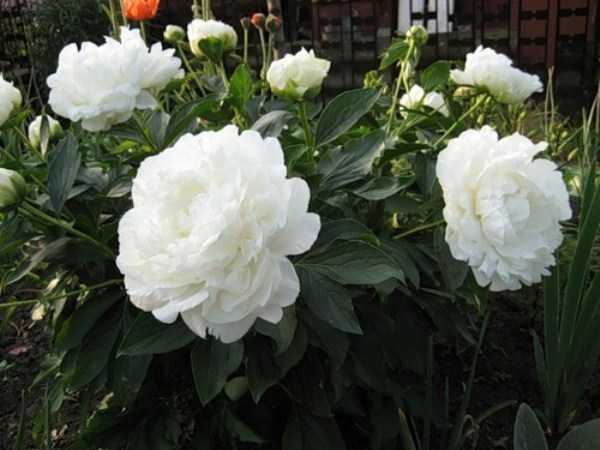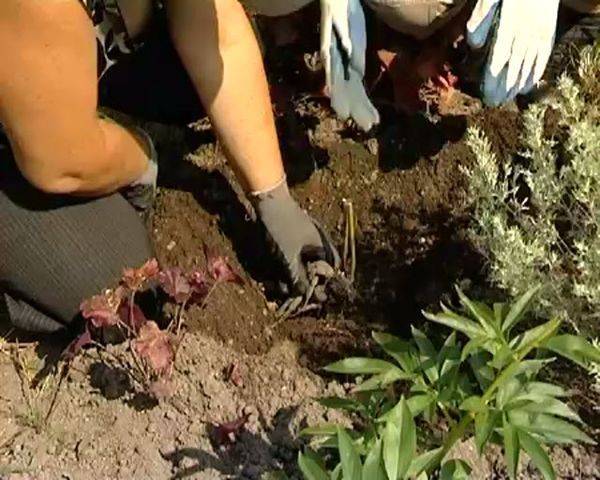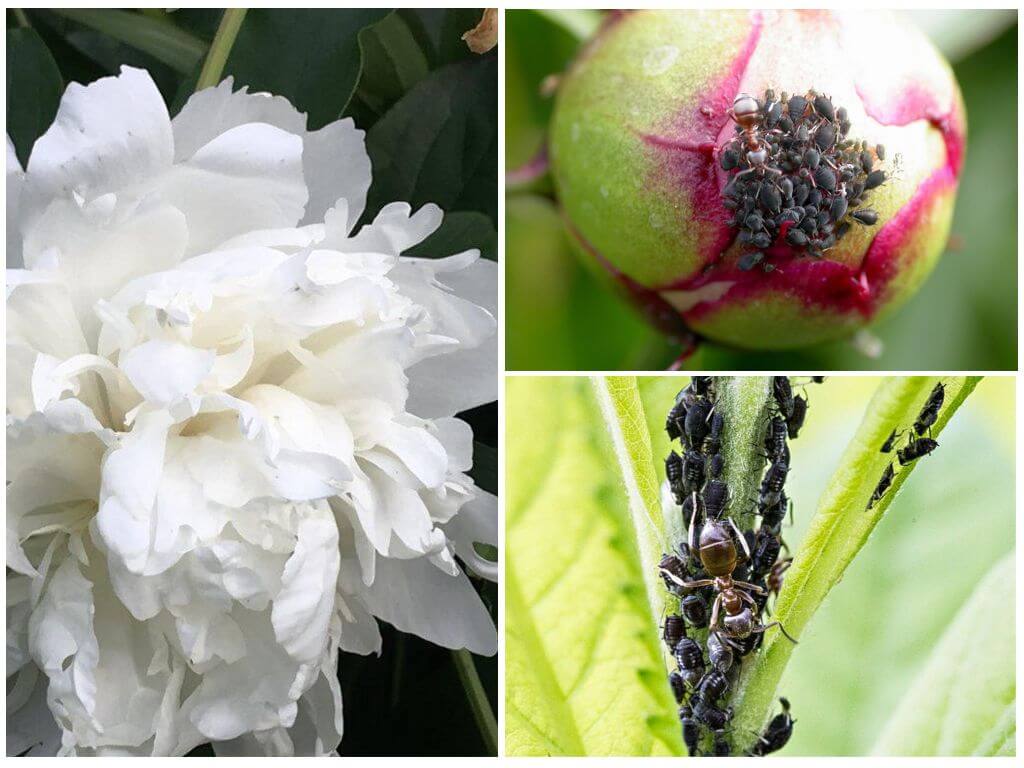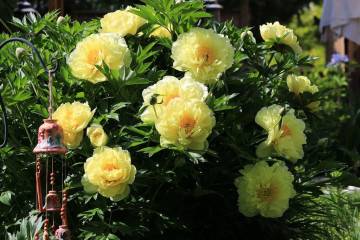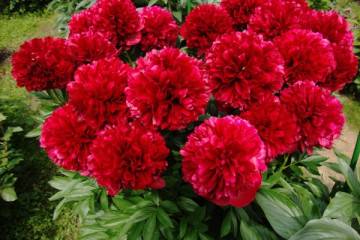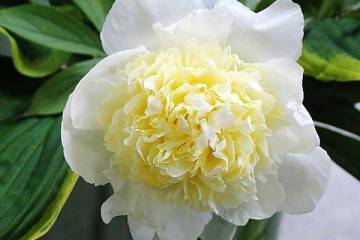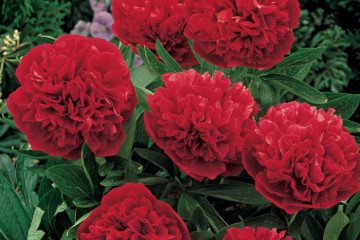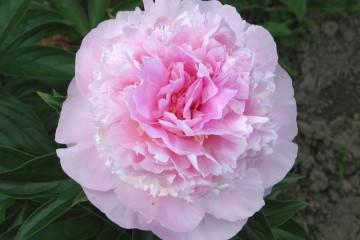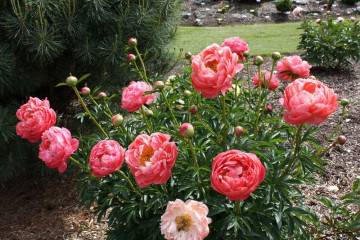Peony Ann Cousins (Paeonia Ann Cousins) - description of the variety
Content:
The Dutch cultivar Ann Cousins peony belongs to the group of lactic-flowered peonies. Such flowers began to be grown in China, at the beginning of the 19th century they began to be cultivated in France. These peonies are viable, they live for a very long time. Milk-flowered peonies are usually densely double, but there are also anemone-like forms.
Brief description, characteristic
Characteristic features of the variety:
- bush height - 80-90 cm;
- bush width - 60-90 cm;
- flowering period - from May to June, refers to late flowering varieties;
- white, densely double corollas, up to 20 cm in diameter;
- the central petals are light yellow, and the outer ones are slightly pink.
- leaves are dissected, glossy.
Advantages and disadvantages of Paeonia Ann Cousins
Any variety has its pros and cons.
Pros:
- With proper fit and minimal maintenance, they feel great in the middle lane.
- They grow without transplant for a long time.
- It is frost-resistant, tolerates well even snowless winters.
- Very large flowers.
There is only one minus - this variety does not tolerate transplanting well.
Use in landscape design
Peony Ann Cousins is loved by landscape designers, used as a specimen and in groups. Groups of peonies, consisting of varieties with different flowering periods, are especially good.
Growing a flower, how to plant it in open ground
To grow healthy, abundantly flowering bushes, you need to follow certain simple rules.
Planting by root cuttings
Root cuttings - areas of rhizome, 2-5 cm long. The cut must contain at least 1 bud and root. Harvesting of planting material is carried out in July-August.
The procedure is as follows:
- Carefully remove the rhizome from the ground.
- Divide the rhizome into cuttings.
- Disinfect the cuttings by soaking them for 2 hours in a pink solution of potassium permanganate.
- Dry the planting material, sprinkle the cuts with crushed coal
- In the prepared holes, plant the cuttings at a distance of 15 cm from each other.
The plot with cuttings is shaded from the sun, regularly watered, weeds are weeded, and mulched for the winter. The first flowers will appear on plants in 3 years.
What time is the boarding
The best time for planting peonies in open ground is the last week of August - the first week of September. When planting seedlings during this period, you can be sure that it will take root and form a good root system.
Location selection
Since the peony Ann Cousins grows in one place up to 30 years old and does not tolerate transplanting well, then the choice of his place of residence must be taken responsibly.
Main characteristics:
- the place is open, sunny;
- nutritious soil, loose;
- groundwater at the site should not be close;
- high-quality drainage must be provided;
- absence of other perennials, buildings nearby.
How to prepare the soil and flower for planting
Preparing the landing site:
- Dig a hole 60 cm deep and 60 cm in diameter;
- Lay drainage at the bottom of at least 15 cm. You can use pebbles, brick chips, expanded clay.
- Pour a layer of earth with humus on top of the drainage.
After 1-2 weeks, you can plant a new bush.
Plant preparation:
- All the stems of the selected plant are cut off.
- Carefully dig out the root system, being careful not to damage the adventitious roots.
- The soil is removed from the roots so that the buds are visible.
- The accessory roots are cut, leaving 10-12 cm.
- Rotten, dried out areas of rhizomes are removed by sprinkling the slices with crushed coal.
- The rhizome with a pruner or a sharp knife is divided into parts so that in each plot there are 2-3 developed buds and 2 adventitious roots.
Planting procedure step by step
Planting a peony is not difficult, but it is necessary to follow the algorithm.
Procedure:
- The rhizomes are placed in a prepared and well-spilled hole.
- The upper kidney is positioned flush with the ground.
- They fill the hole with soil, compacting it.
At the end, the planting site is mulched with hay, sawdust. Watering.
Planting with seeds (for breeding)
Getting Paeonia Ann Cousins seeds is troublesome, many hybrids do not produce fruit at all. The peculiarity of the seed propagation of the peony by Ann Kusins is that its seeds are taut. Only every fifth or sixth seed planted germinates. And a bush grown from a seed will bloom only 6-7 years after planting.
The collection of seeds is carried out in August, when the capsules have just begun to open. The seeds are planted in a container with calcined wet sand.
For preparation, a two-stage stratification is carried out.
- Warmth. Wet sand with seeds is heated twice to +30 ° C. After heating, the sand is cooled to room temperature and watered.
- Cold. The seeds germinated in the sand are transferred to peat pots. Seedlings are kept for 3 months at a temperature of + 5 + 10 ° C.
After stratification, young peonies are transferred to a room, where they live until May, when they can be transplanted into open ground.
Plant care
In order for flowers to delight with beautiful buds, they need to be provided with good care.
Watering and feeding
Water the peonies as needed, avoiding overdrying and waterlogging. Water must fall strictly under the root. At a time, 2 buckets are poured under the bush.
Top dressing scheme:
- March-April. Add a solution of mullein in water (1:10).
- May-June (beginning of flowering). Apply a solution of mullein 1:10 with the addition of 20 g of phosphorus or 70 g of complex fertilizer.
- End of August - beginning of September. Phosphorus-potassium fertilizers are introduced.
Mulching and loosening
You need to loosen the soil around the bush after each watering. Loosening depth - 5-7 cm. The procedure is necessary to improve root respiration.
Mulching the soil around the plants is recommended to get rid of weeds and regulate soil moisture.
Preventive treatment
As a prevention of the appearance of rot and rust, peony bushes are treated with a fungicide in early April, in the first and last ten days of May. In the same way, you can cultivate the soil around a newly planted peony.
Peony Blossom Ann Cousins
At the very beginning of flowering, the lateral buds on the bush are plucked, this will enable the central ones to "gain mass", to become larger.
Faded buds are cut with a sharp pruner, leaving part of the stems on the bush. It is imperative to remove fallen petals from the ground around the peony, otherwise they will become a home for pests and pathogens.
What to do if it does not bloom, possible reasons
It so happens that a peony, being in one place, does not bloom for years. The most likely causes of this problem:
- unsuitable landing site;
- bush under 2 years old;
- strong deepening when landing;
- the bush has been growing in one place for more than 30 years, requires rejuvenation;
- excess nitrogen in top dressing, which is noticeable in rich greenery, powerful leaves and stems;
- acidic soil.
If the roots of the plant are affected by nematodes, the peonies will not bloom either.
Peonies after flowering
Peonies are not transplanted immediately after flowering. But the prosperous buds must be cut off. Cutting the peduncle is carried out with a sharp secateurs over the top leaf.
Preparing for winter
Activities required for the peony to winter successfully:
- At the end of October, the shoots are cut, leaving 10 cm.
- After cutting, the soil is mulched with a thick layer of sawdust or straw (10-15 cm).
Diseases, pests and ways to control them
Diseases most often appear when agricultural technology is violated. Peonies are affected by viral diseases. Ring spot and ring mosaic are virtually incurable. Fungal diseases - late blight, root rot, powdery mildew can be treated with fungicides.
Pests that can settle on a peony: aphids, spider mites, thrips. If the number of parasites is small, home remedies will help: soap solution, infusion of garlic, makhorka. If there are many pests, insecticides and acaricides are used.
Breeders were modest, calling the Pion anna Cousins large-flowered variety. Its flowers cannot be called otherwise than gigantic. One of the latest and longest flowering varieties of herbaceous peony will be a decoration of the garden.
